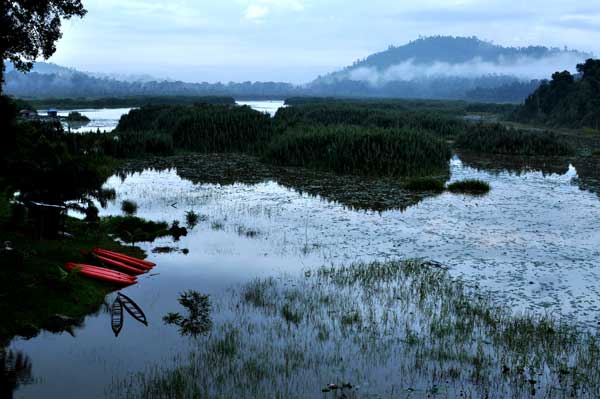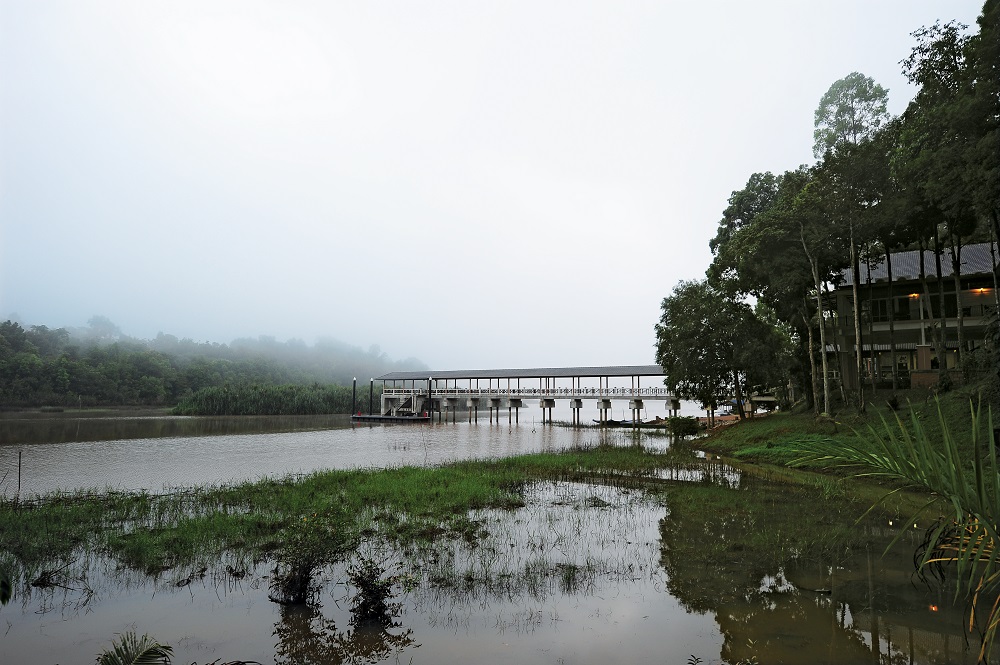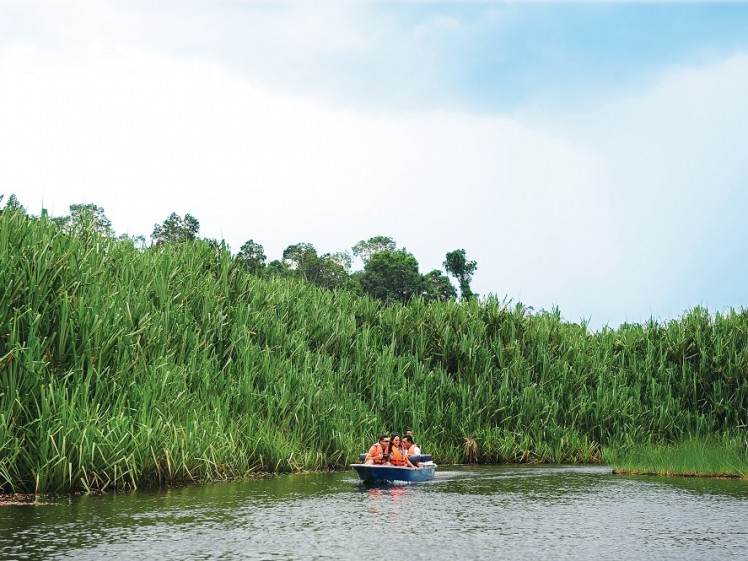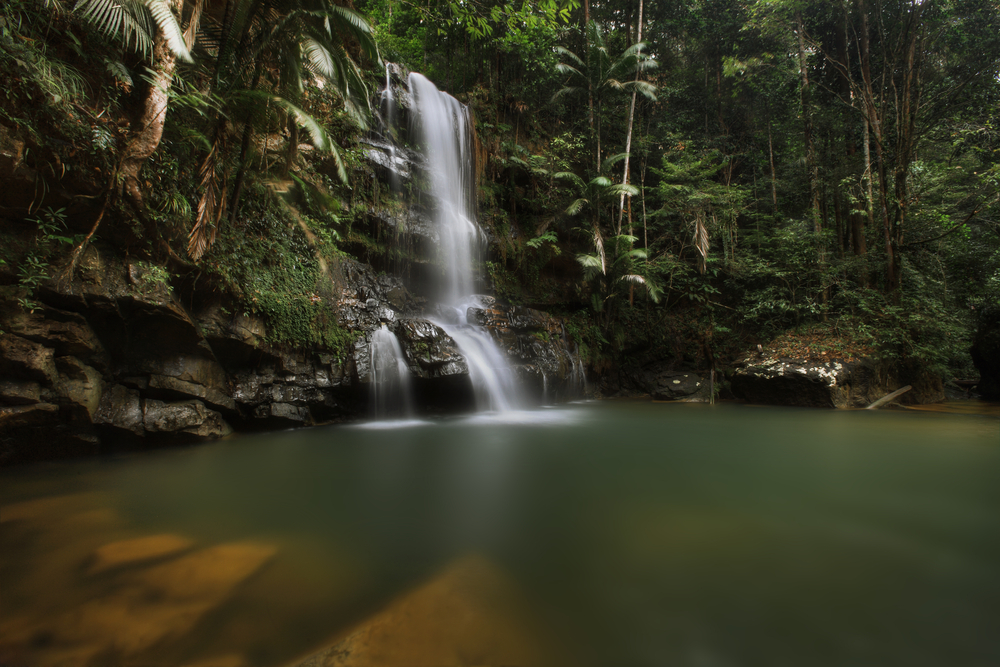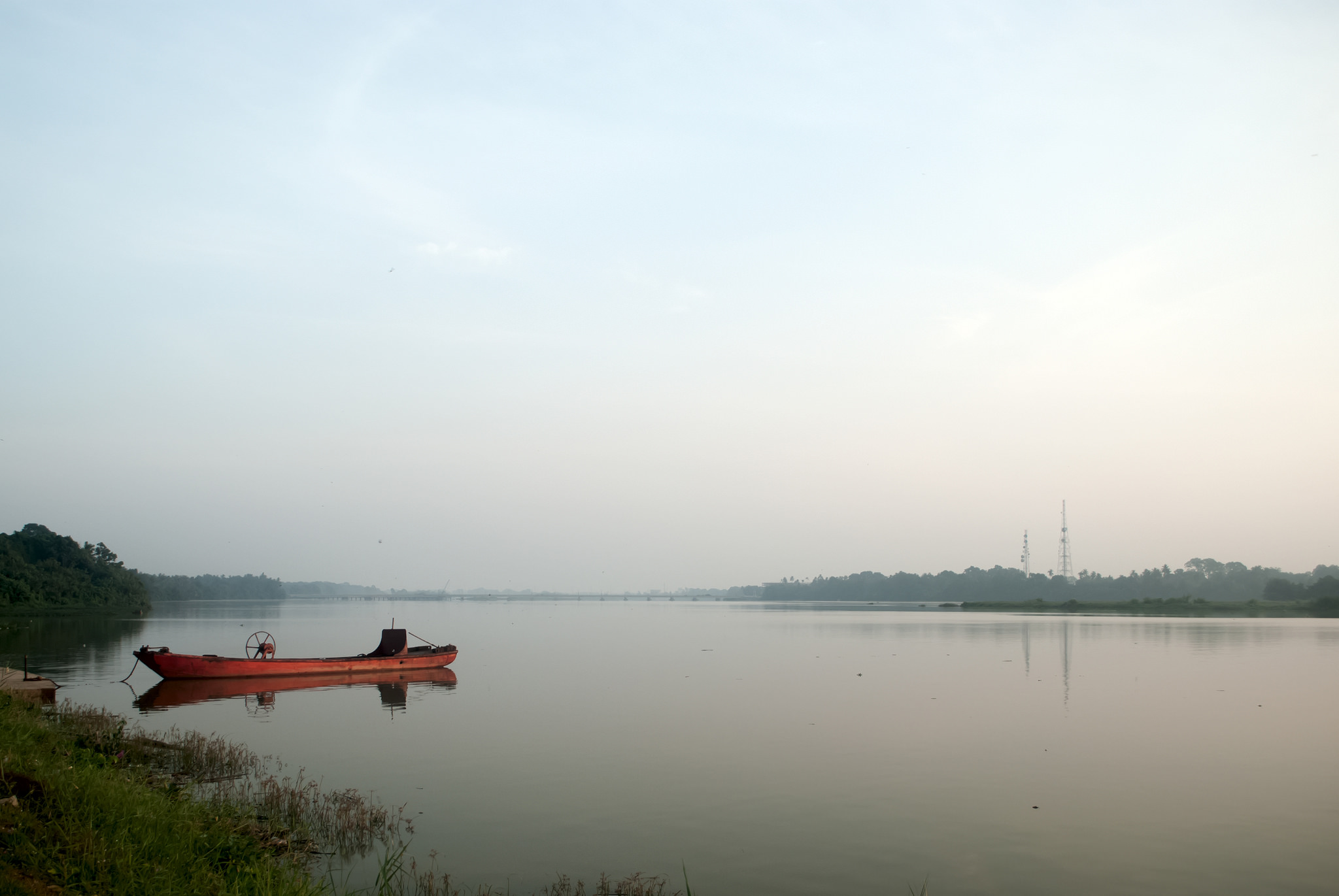Published date
Le potentiel des plantations d'hévéas et d'acacia pour les stocks de carbone forestier en Malaisie El potencial de las plantaciones de caucho y acacias de las reservas de carbono forestal en Malasia
Author
For further details log on website :
http://www.bioone.org/doi/abs/10.1505/146554816818206140
International Forestry Review
Published by: Commonwealth Forestry Association
International Forestry Review 18(1):68-77. 2016
https://doi.org/10.1505/146554816818206140
https://doi.org/10.1505/146554816818206140
Author
Keywords: carbon stock, plantations, natural forests, aboveground biomass, Malaysia
REFERENCES
Adachi, M. , Ito, A. , Ishida, A. , Kadir, W.R. , Ladpala, P. and Yamagata, Y. 2011. Carbon budget of tropical forests in Southeast Asia and the effects of deforestation: An approaching using a process-based model and field measurements. Biogeosciences 8: 2635– 2647. Crossref
Aiken, S.R. and Moss, M.R. 1975. Man's impact on the tropical rainforest of Peninsular Malaysia: A review.Biological Conservation 8(3): 213–229. Crossref
ANON. 2013. Acacia and rubber plantations in Malaysia— An assessment of its biomass. Forestry Consultants Inc. report No. 8, submitted to the Forestry Department of Peninsular Malaysia, Kuala Lumpur. 69 pp.
Baishya, R. , Barik, S.K. and Upadhaya, K. 2009. Distribution pattern of abobeground biomass in natural and plantation forests of humid tropics in northeast India. Tropical Ecology 50(2): 295–304.
Basuki, T.M. , Van Lakke, P.E. , Skidmore, A.K. and Hussin, Y.A. 2009. Allometric equations for estimating the above-ground biomass in tropical lowland dipterocarp forests. Forest Ecology and Management 257:1684–1694. Crossref
Berry, N.J. , Phillips, O.L. , Lewis, S.L. , Hill, J.K. , Edwards, D.P. , Tawatao, N.B. , Norhayati, A. , Magintan, D. , Chey, V.K. , Maryati, M. , Robert, C.O. and Hamer, K.C. 2010. The High value of logged tropical forests: lessons from Northern Borneo. Biodiversity Conservation 19: 985–997. Crossref
Breugel, M.V. , Ransijn, J. , Craven, D. , Bongers, F. and Hall, J.S. 2011. Estimating carbon stock in secondary forests: Decisions and uncertainties associated with allometric biomass models. Forest Ecology and Management 262: 1648–1657. Crossref
Brown, S. and Lugo, A.E. 1992. Aboveground biomass estimates for tropical moist forest of the Brazilian amazon. Interciencia 17: 8–18.
Bruning, E.F. 1974. Ecological studies in the Kerangas Forests of Sarawak and Brunei, Brunei Literature Bureau for Sarawak Forest Department, Sarawak.
Charoenjit, K. , Zuddas, P. , Allemand, P. , Pattanakiat, S. and Pachana, K. 2015. Estimation of biomass and carbon stock in Para rubber plantations using object-based classification from Thaicote satellite data in Eastern Thailand. Journal of Applied Remote Sensing 9(1): 096072. Crossref
Chave, J. , Andalo, C. , Brown, S. et al. 2005. Tree Allometry and Improved Estimation of Carbon Stocks and Balance in Tropical Forests. Oecologia 145: 87–99. Crossref
Dirocco, T.L. 2012. A thorough quantification of tropical forest carbon stocks in Malaysia. Carbon Stocks of Tropical Forests, Spring: 1–18.
Gibbs, H.K. , Brown, S. , Niles, J.O. and Foley, J.A. 2007. Monitoring and estimating tropical forest carbon stocks: making REDD reality. Environmental Research Letters 2: 1–13. Crossref
FAO. 2010. Global forest resources assessment 2010, country report Malaysia, http://www.fao.org/docrep/013/al558e/al558e.pdf
Hamdan, O. , Mohd Hasmadi, I. , Khali Aziz, H. , Norizah, K. and Helmi Zulhaidi, M.S. 2015. L-band saturation level for aboveground biomass of dipterocarp forests in Peninsular Malaysia. Journal of Tropical Forest Science 27(3): 388–399.
Hamdan, O. , Norsheilla, M.J.C. , Ismail, P. , Abdul Khalim, A.S. and Samsudin, M. 2014. Assessing carbon pools in dipterocarp forests of Peninsular Malaysia. http://www.frim.gov.my/wp-content/uploads/itto/Publication/CTReSS2014_FullPaper_Hamdan.pdf
Hamdan, O. , Khali Aziz, H. and Abd Rahman, K. 2011. Remotely sensed L-Band SAR data for tropical forest biomass estimation. Journal of Tropical Forest Science 23(3): 318–327.
Hediyanti, I. and Sulistyawati, E. 2010. Carbon stocks in Acacia mangium Willd. stands at different ages.
Hezri, A.A. and Hasan, M.H. 2006. Towards sustainable development? The evolution of environmental policy in Malaysia. Natural Resources Forum 30(1): 37–50. Crossref
Ho, R. 2006. Handbook of univariate and multivariate data analysis and interpretation with SPSS. Taylor and Franchis Group, Boca Raton. 406 pp.
Hoshizaki, K. , Niiyama, K. , Kimura, K. , Yamashita, T. , Bekku, Y. , Okuda, T. , Queh, E.S. and Noor, N.S.M. (2004). Temporal and spatial variation of forest biomass in relation to stand dynamics in a mature, lowland tropical rainforest, Malaysia. Ecological Research 19(3): 357–363. Crossref
Houghton, R.A. 2004. Aboveground forest biomass and the global carbon balance. Global Change Biology 11: 945–958. Crossref
Houghton, R.A. and Hackler, J.L. 1999. Emissions of carbon from forestry and land-use change in tropical Asia.Global Change Biology 5(4): 481–492. Crossref
Jeyanny, V. , Wan Rasidah, K. , Ahmad Husni, M.H. , Siva Kumar, B. , Muhammad Firdaus, S. and Arifin, A. 2015. Leaf litter decomposition and soil carbon dioxide fluxes across climatic gradient in tropical montane and lowland forests. Journal of Tropical Forest Science 27(4): 472–487.
Jeyanny, V. , Ahmad Husni, M.H. , Wan Rasidah, K. , Siva Kumar, B. , Arifin, A. and Kamarul His Ham, M. 2014. Carbon stocks in different carbon pools of a tropical lowland forest and a montane forest with varying topography. Journal of Tropical Forest Science 26(4): 560–571.
Kamaruzamman, J. and HJ. Dahlan, H.T. 2008. Sustainable forest management practices and environmental protection in Malaysia. Environment and Development 4(3): 191–199.
Kindermann, G.E. , Mccallum, I. , Fritz, S. and Obersteiner, M. 2008. A global forest growing stock, biomass and carbon map based on FAO statistic. Silva Fennica 42(3): 387–396. Crossref
Kitayama, K. and Aiba, S. 2002. Ecosystem structure and productivity of tropical rain forests along altitudinal gradients with contrasting soil phosphorous pool on Mount Kinabalu, Borneo. Journal of Ecology 90(1): 37–51.Crossref
Liao, C. , Luo, Y. and Li, B. 2010. Ecosystem carbon stock influenced by plantation practice: Implications for planting forests as a measure of climate change mitigation. PLoS ONE 5(5): e10867. Crossref
Malaysia National Innovation Strategy. 2011. National Innovation Study in Wood-based Industry, Special Innovation Unit, Prime Minister's Department (Unpublished report).
Matsumura, N. 2011. Yield prediction for Acacia mangium plantations in Southeast Asia Formath 10: 295–308.
Matsumura, N. , Nakama, E. , Sukandi, T. and Imanuddin, R. 2008. Carbon stock estimates for Acacia mangium forests in Malaysia and Indonesia— Potential for implementation of afforestation and reforestation.CDM projects—Formath 7: 15–24.
Menon, P. 2000. Status of Malaysia's timber industry. Asian Timber 19(6): 12–15.
Minerva Singh, J.D. 2001. Forest structure and biomass in a mixed forest-oil palm landscape in Borneo. Master Dissertation, University of Oxford. 213 pp.
Ming, A. , Jia, H. , Zhao, J. , Tao, Y. and Li, Y. 2014. Above- and below-ground carbon stocks in an indigenous tree (Mytilaria laosensis) plantation chronosequence in subtropical China. PloS ONE 9(10): e109730. Crossref
Morel, A.C. , Saatchi, S.S. , Malhi, Y. , Berry, N.J. , Banin, L. , Burslem, D. , Nilus, R. and Ong, R.C. 2011. Estimating aboveground biomass in forest and oil palm plantation in Sabah, Malaysia Borneo using ALOS PALSAR data. Forest Ecology and Management 262: 1786–1798. Crossref
National Timber Policy. 2009. NATIP National Timber Policy 2009–2020, Ministry of Plantation Industries and Commodities, Malaysia. 128 pp.
Neto, V. , Ahmad Ainuddin, N. , Wong, M.Y. and Ting, H.L. 2012. Contributions of forest biomass and organic matter to above- and belowground carbon contents at Ayer Hitam Forest Reserve, Malaysia. Journal of Tropical Forest Science 24(2): 217–230.
Ng, S.L. 2000. The certification process in Malaysia. A case study. Pilot Project Submitted in Partial Fulfilment for the Certificate for the International Training Programme on Forest Certification, awsassets.panda.org/downloads/sida.pdf
Nykvist, N. and Sim, B.L. 2009. Changes in carbon and inorganic nutrients after clear felling rainforest in Malaysia and planting with Acacia mangium. Journal of Tropical Forest Science 21(2): 98–112.
Palma, R.A. 2014. Determination of aboveground carbon density of mangium (Acacia mangium Willd.) using biomass expansion factor. Mindanao Journal of Science and Technology 12:39–50.
Proctor, J. , Phillips, C. , Duff, G.K. , Heaney, A. and Robertson, F.M. 1983. Ecological studies in four contrasting lowland rain forests in Gunung Mulu National Park, Sarawak: I. Forest environment, structure and flouristics. Journal of Ecology 71(1): 237–230. Crossref
Ratnasingam, J. , Ioras, F. and Wenming, L. 2011. Sustainability of the rubberwood sector in Malaysia. Notulae Botanicae Horti Agrobotanici Cluj-Napoca 39(2): 305–311.
Ratnasingam, J. and Ioras, F. 2006. Colonial British Forestry and the years thereafter. Tropical Resources Network Publication, Kuala Lumpur. 163 pp.
Ratnasingam, J. and Scholz, F. 2009. Rubberwood an industrial perspective. World Resource Institute, Washington. 74 pp.
Ratnasingam, J. , Ramas Amy, G. , Ioras, F. , Kaner, J. and Wenming, L. 2012. Production Potential of Rubberwood in Malaysia: its economic challenges. Notulae Botanicae Horti Agrobotanici Cluj-Napoca 40(2): 317–322.
Ratnasingam, J. , Ramasamy, G. , Toong, W.C. , Ioras, F. , Canja, C.M. , Lupu, M.I. and Abrudan, I.V. 2015a. Carbon stocking in the natural forests—the case of Malaysia. Notulae Botanicae Horti Agrobotanici Cluj-Napoca 43(1): 278–286. Crossref
Ratnasingam, J. , Ramas Amy, G. , Lim, T.W. , Abdul Latib, S. and Neelakandan M. 2015b. The prospects of rubberwood biomass energy production in Malaysia. Bioresources 10(2): 2526–2548. Crossref
Ravindranath, N.H. , Somashekhar, B.S. and Gadgil, M. 1997. Carbon flows in Indian forests. Climate Change 35: 297–320. Crossref
Reyes, G. , Brown, S Chapman, J. and Lugo, A.E. 1992. Wood density of tropical tree species. USDA Forest Service, General Technical Report SO-88, Louisiana, USA.
Roslan, I. (1995). An economic evaluation of carbon emission and carbon sequestration for the forestry sector in Malaysia. Biomass and Bioenergy 8(5): 281–292. Crossref
Saatchi, S.S. , Houghton, R.A. , Dos Santos Alvala, R.C. , Soares, J.V. and Yu, Y. 2007. Distribution of aboveground live biomass in the Amazon Basin. Global. Change Biology 13: 816–37 Crossref
Saengruksawong, C. , Khmayong, S. , Anongrak, N. and Pinthong, J. 2012. Growths and carbon stocks in rubber plantations on chakkarat soil series, Norteastern Thailand. Journal of Science and Technology 19(4): 271–278.
Saner, P. , Yen, Y.L. , Robert, C.O. and Andy, H. 2012. A carbon stocks and fluxes in tropical lowland dipterocarp rainforests in Sabah, Malaysian Borneo. PLoS ONE 7(1): e29642. Crossref
Shigematsu, A. , Mizoue, N. , Kajisa, T. and Yoshida, S. 2011. Importance of Rubberwood in wood export of Malaysia and Thailand. New Forests 41(2): 179–189. Crossref
Soepadmo, E. 1987. Structure, above ground biomass and floristic composition of forest formations at Gunung Janing Barat, Ulu Endau, Johore, Malaysia. Malayan Nature Journal 41: 275–290.
Tanouchi, H. , Nakamura, S. , Ochiai, Y. and Azman, H. 2000. Profiles of species composition and aboveground biomass in a mangrove forest, Matang, Peninsular Malaysia. Japan Agricultural Research Quarterly 34(2): 1–12.
Thiruchelvam, K. and Ratnasingam, J. 2013. Is plantation forestry sustainable in Malaysia? IFRG Report No. 8/2013, Singapore. 58 pp.
Ullah, M.R. and Al-Amin, M. 2012. Above- and belowground carbon stock estimation in a natural forest of Bangladesh. Journal of Forest Science 58: 372–379.
Vashum, K.T. and Jayakumar, S. 2012. Methods to estimate above-ground biomass and carbon stock in natural forests- a review. Journal of Ecosystem and Ecology 2(4): 3–7.
Wan Razali, W.M. and Mohd Shahwahid, H.O. 2011. Transitions to sustainable forest management and rehabilition in Malaysia. www.apafri.org/activities/Forest%20Transitions/reports/Malaysia.pdf
Wauters, J.B. , Coudert, S. , Grallien, E. , Jonard, M. and Ponette, Q. 2008. Carbon stock in rubber tree plantations in Western Ghana and Mato Grosso (Brazil). Forest Ecology and Management 252: 2347–2361.Crossref
Woon, W.C. and Norini, H. 2002. Trend in Malaysian forest policy. Policy Trend Report: 12–28.
Yetti, H. , Arifin, A. , Mohd Noor, M. , Hazandy, A.-H. , Shamshuddin, J. , Nik Muhammad, M. , Ika, H. and Khairulmazmi, A. (2011). Assessing forest plantation productivity of exotic and indigenous species on degraded secondary forest. American Journal of Agricultural and Biological Sciences 6(2): 201–208. Crossref
http://www.bioone.org/doi/abs/10.1505/146554816818206140

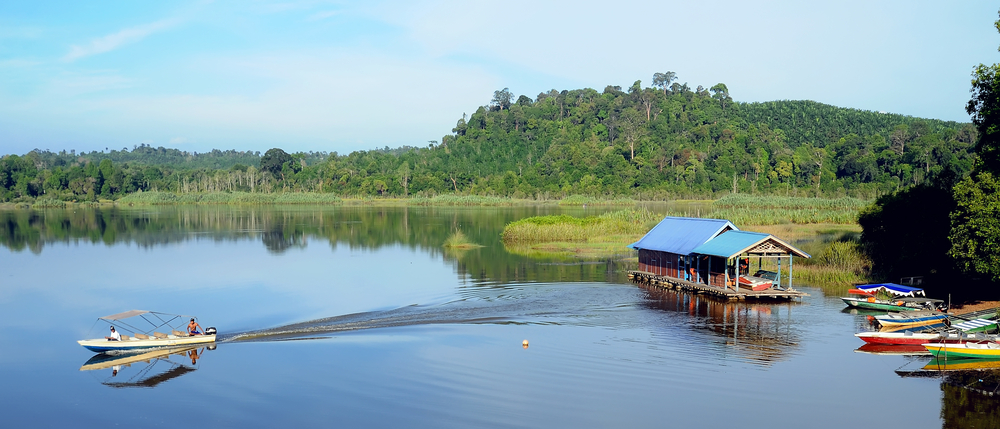
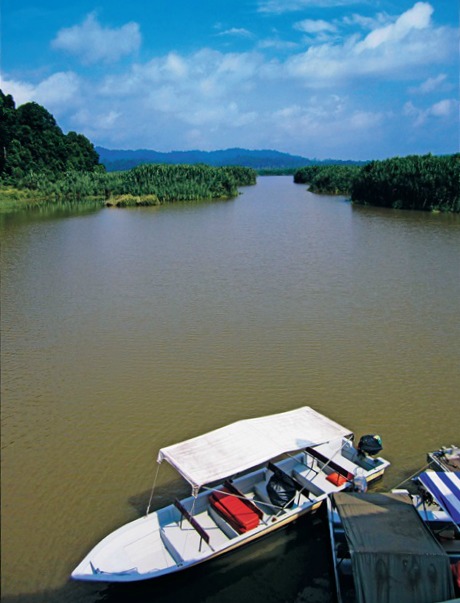 Lake Chini is Malaysia’s second-largest natural freshwater lake, 12.565 acres of lush wetlands comprising a dozen interconnecting bodies of water.
Lake Chini is Malaysia’s second-largest natural freshwater lake, 12.565 acres of lush wetlands comprising a dozen interconnecting bodies of water.